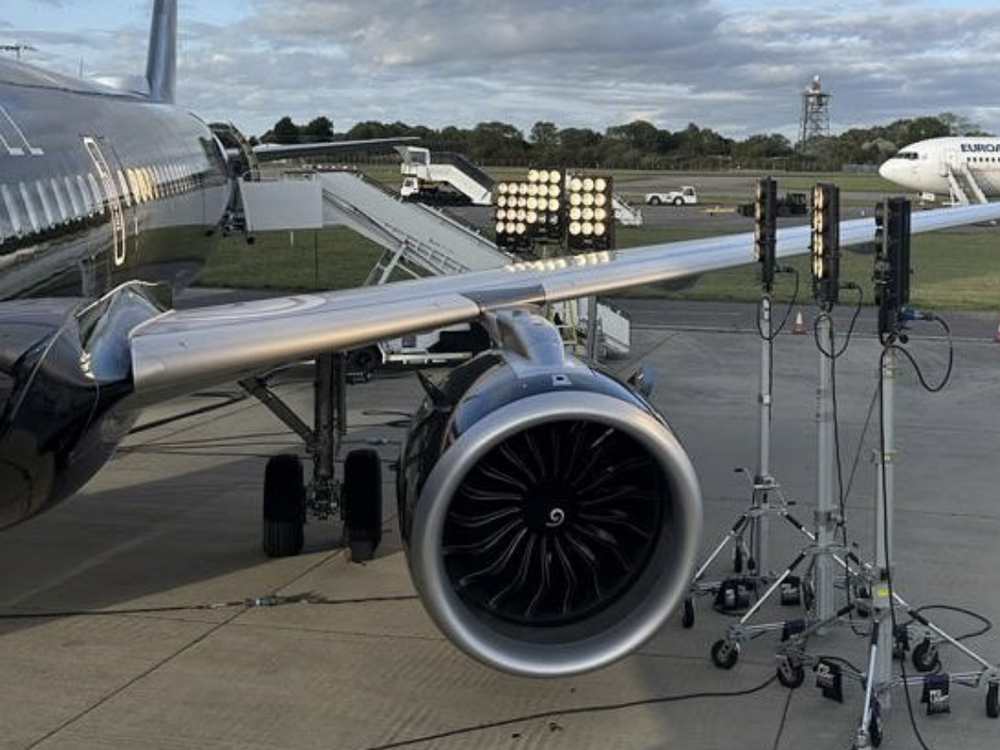Section Branding
Header Content
Crew aboard a U.S.-bound plane discovered a missing window pane at 13,000 feet
Primary Content
A U.S.-bound plane took off from London last month with four damaged window panes, including two that were completely missing, according to U.K. air accident investigators.
No one was injured by the window malfunctions, which appear to have been caused by high-power lights used in a film shoot, the U.K.'s Air Accident Investigation Branch reported in a special bulletin published Nov. 4.
The aircraft departed from London's Stansted Airport on the morning of Oct. 4 carrying 11 crew members and nine passengers, all of whom are employees of the "tour company or the aircraft's operating company," the report states, without elaborating on the tour company.
The single-aisle aircraft, an Airbus A321, can seat more than 170 passengers, but the small group of passengers were all seated in the middle of the cabin, just ahead of the overwing exits.
The missing windows weren't discovered until the plane was climbing at an altitude of 13,000 feet, according to the AAIB report.
"Several passengers recalled that after takeoff the aircraft cabin seemed noisier and colder than they were used to," investigators wrote. A crew member walked towards the back of the aircraft, where he spotted a window seal flapping on the left side of the aircraft.
"The windowpane appeared to have slipped down," the report reads. "He described the cabin noise as 'loud enough to damage your hearing.' "
As the plane approached 14,000 feet, the pilots reduced speed and stopped their ascent. An engineer and co-pilot went back to take a look at the window and agreed the aircraft should turn around immediately.
The plane landed safely back at Stansted after 36 minutes of total flying time, during which the plane had remained "pressurized normally," investigators wrote.
After inspecting the plane from the ground, the crew discovered that a second window pane was also missing and a third was dislodged. A fourth window appeared to be protruding slightly from its frame.
One shattered window pane was later recovered from the runway during a routine inspection.
The windows may have been damaged by high-power flood lights used during filming the day before the flight, according to the AAIB's assessment.
The lights, which were intended to give the illusion of a sunrise, were placed about 20 to 30 feet from the aircraft, shining on first the right, then the left side of the craft for over nine hours in total.
A foam liner had melted away from at least one of the windows and several window panes appeared to have been warped by the thermal heat.
"A different level of damage by the same means might have resulted in more serious consequences, especially if window integrity was lost at higher differential pressure," the AAIB wrote. The agency had not returned a call from NPR by the time of publication.
In 2018, Southwest passenger Jennifer Riordan was fatally injured after being partially sucked out of a plane window that was smashed by shrapnel from an exploded engine.
Several cracked airplane windows have made headlines in the years since, but aviation experts maintain that the risk of being injured or killed in such a scenario is still rare.
Copyright 2023 NPR. To see more, visit https://www.npr.org.


